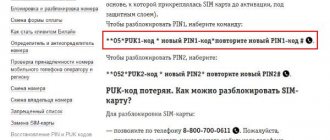Conditional call forwarding, what is it? This question often arises among subscribers who are faced with redirecting an outgoing call to another number for the first time. In this article you will find a detailed description of this mobile service. Find out in what cases the option can be useful and how it can be activated/deactivated.
How redirection works
Call forwarding is the operation of transferring an incoming call to another number or voicemail if the subscriber does not answer the call. The forwarding occurs automatically thanks to the built-in functions of the smartphone or the options of the connected operator.
If the forwarding is internal and the call goes, for example, to the number of the same operator, then the fee is charged according to the established tariff plan. External relocation means that the service is paid at the rates of the company that provided the opportunity.
Call forwarding may not always be enabled on phones. Some models may not support this feature due to outdated hardware or software. The option is available on all modern smartphones.
Advantages and disadvantages
The function has the following advantages:
- There is no need to keep the SIM card active in your phone.
The settings are saved on the operator’s server, so the operation of the settings does not depend in any way on the current state of the number. - Hiding your main phone number. During forwarding , the number to which the forwarding is being performed is not displayed
. - Important calls will not be missed.
Among the negative aspects of using the add-in are:
- The action applies exclusively to calls;
incoming text messages will remain unread. - The service is paid.
The user must pay the cost of the call according to the operator's tariffs.
Types of forwarding
Shipping can be:
- “Ascending” – carried out to the next specified number after a certain time, allows you to simultaneously make several calls to one phone;
- unconditional - the simplest option, when the subscriber selects a number to forward absolutely all incoming calls (often works for online stores and other online platforms);
- to a group of numbers: an outgoing call is sent to several numbers at the same time, which means that it is answered by the one who can answer first.
- conditional – in the absence of an answer or “busy” or “unavailable” signals, the call is transferred to the specified number, that is, the process works according to the condition met;
Regular users connect a conditional or unconditional service using the internal functionality of a smartphone, applications or operator. Call forwarding “on the rise” and to a group of numbers is usually required in online stores and branches of companies and enterprises when the phone receives a lot of calls. For example, an Internet provider support service for subscribers in different regions.
Unconditional forwarding
The most common type of call forwarding, in which all calls received to the first number will be automatically sent to the second. Typically, this function is used by those who have switched to a new number, but cannot refuse the old one. There are no conditions for such forwarding, because all numbers will be automatically sent to the second number.
Conditional forwarding
There is also a conditional redirect, which requires different conditions to exist. Therefore, the first condition is that when the owner of the first number does not answer, all calls will be sent to the second. Another condition could be that the first phone is switched off, in which case calls are also forwarded to the second.
The condition may be that the first number's line is busy, so the call may be transferred to another number.
In addition, the most common condition among companies is when the first number cannot answer the call, the call is sent to the second, if the second cannot answer the call, the call is forwarded to the third and so on until it reaches a subscriber who can answer.
There is also a type of forwarding when a call can be forwarded to several numbers at the same time. In this case, the one who can answer will answer the phone.
These services can be associated with a mobile operator and choose unconditional or conditional forwarding, but the price will vary depending on the operator you use and whether it is included in your plan or you will have to pay a separate additional fee
Methods for setting the forwarding function
Users are given the opportunity to choose from several methods the most optimal option for forwarding calls on their Android.
Performing forwarding through Android settings
A quick and easy way to enable incoming call forwarding can be implemented directly using the existing settings in your mobile device. To do this you will need to perform a number of simple steps, namely:
- Click on the “Settings” item, located at the top of the screen in the form of vertical ellipses.
- Next, in the menu that appears, select “Calls”.
- Then you need to go to the “Call Forwarding” section, which will present 4 options.
When choosing one of the options, be sure to indicate the number to which calls will be forwarded. For this function to work, after indicating the phone number, you must click the “Enable” button.
Application-based forwarding
For those who do not want to tinker with the settings of their mobile device or for some reason need to change SIM cards often, you can use the available applications. You can install them by directly downloading from the Play Market. One of the best options for applications that allow forwarding is Simple Call Forwarding.
Thanks to the designated application, you can enable or disable the function using a widget that will be installed on the Android desktop. But you can use any other application of your choice. There are quite a lot of similar offers on the Play Market. To do this, you just need to enter the request “Call forwarding” in the search field.
Operator-assisted forwarding
You can also activate the indicated function by contacting your mobile operator or making a request using USSD commands, if such a service is provided. With the first option, everything is simple, just call the operator and ask to turn on the forwarding service. The second option involves the implementation of simple steps consisting of displayed commands.
- For all calls – **21* phone number#. To check, you need to press *#21#, and cancel the service -##21#;
- If there is no answer - **61* phone number. To check, you need to enter *#61#, and you can cancel by specifying the command - ##61#.
- If the subscriber is unavailable – **62*. You can perform the check by entering the command *#62#, and cancel - ##62#.
- In case the subscriber number is busy -**67*. To implement the check, you will need to display the command *#67#. You can cancel by sending a request in the form of the following command - ##67#.
If you need to reset previously installed forwardings, then the mobile device user needs to send an SMS with the command ##002#. The presented command requests are valid for such mobile operators as Megafon, MTS, Beeline and Tele-2.
Therefore, if a person uses the services of another cellular operator, then you can find out which teams are responsible for forwarding directly from a consultant or on the official website of the operator that provides mobile communication services.
Is it possible to forward SMS messages?
Setting up a call forwarding service is quite simple, but is it possible to forward SMS messages in the same way? This task is completely solvable, but a little more difficult in terms of choosing methods of implementation.
The thing is that SMS forwarding cannot be performed, for example, through a telecom operator and such a function cannot be installed in the settings of a mobile device. Special applications that can be downloaded from the Google Play store can help in this matter.
Advantages and Disadvantages of Forwarding
Like any option, call forwarding has its pros and cons, so please read them carefully before signing up for this service:
Advantages:
- You can listen to voice messages (this is a separate option);
- Always stay in touch if you cannot reach the main number;
- A convenient feature for corporate networks where calls are received constantly.
- Hide your main number;
Flaws:
- Not the fastest connection setup. For example, novice users cannot enable this option on their own, although the entire procedure is very simple.
- Price. If you receive a lot of calls, you will have to pay a significant amount of money on your regular user rate, especially if you have a high rate;
- The technology doesn't always work as expected, so in some cases they won't catch up with you;
Whatever option you choose, all settings are registered in the phone, as we mentioned at the beginning of the article when working with the “Phone” application. This includes a method with Android settings and third-party programs. If the entire setup process goes through your cellular operator, no additional action is required on your part. But remember that in most cases there is an additional cost for this option, so turn off call forwarding as soon as you don't need it.
Connection Motif
To be able to reach you on any local, long-distance or even international phone number, just dial *114*14#. If you have 12 rubles in your account, which is exactly how much it costs to activate the service, then activation of the service will be successful. No other expenses are expected. Everything else depends only on your current tariff plan.
When you no longer need forwarding, dial *114*34#. Like any other Motive service, forwarding can be enabled/disabled in other ways.
SMS. Send an SMS with the text “ON/OFF” to number 1028. IVR service. Dial ##914 call, listen to the answering machine and enter 1#14# - activation, 2#34# - deactivation.
Using the LISA office. We find the “additional services” section, select the required service in the list that appears and mark it for activation. To disable it, do the opposite - uncheck it. The main thing is to click on the “accept changes” button after completing the manipulations.
Contact center or service office. By calling the operator at 111 or personally visiting one of Motiv’s offices, the service can also be activated.
In what cases is redirection necessary?
Not everyone needs the service. Since the option is most often paid, if it is not installed using the smartphone functionality, then when connecting and using the funds will be debited from the mobile account or card.
When the service is needed:
- it involves setting up telephony for online platforms, stores, enterprises and other small and medium-sized businesses.
- a work phone is used, which is not always at hand - forwarding is carried out on a personal device;
- the number receives many calls and the subscriber cannot answer or read messages during the day;
The average caller rarely needs to be forwarded to another number or voicemail where they can leave a message.
Low battery
Even the most responsible subscriber may find himself in a situation where the call must come from an important person, and the telephone fee is zero. Enabling the feature will allow you to receive a call on another 100th device. It could also be a second mobile phone or a friend's phone or a work device.
The first line is busy
When the subscriber is already speaking on the first line, the caller will be redirected to an available number. This feature will be very useful in a workflow environment. For example, if a manager has an important conversation, the caller will be redirected to the phone number of a trusted employee, where he can solve his problem.
Insufficient network coverage (no network)
Today, mobile coverage is being consumed even in the most remote corners of Russia. However, even now you can find empty spaces on the map of Russian television systems. Places with insufficient coverage can be called remote regions of the country, some northern areas of the Russian Federation.
However, you don't have to go to the edge of geography to be out of reach. Communication can be interrupted in the subway, during air travel, or in underground passages. In such cases, the caller will also be redirected to another available telephone line.
No answer
If an incoming call cannot be answered after a certain time (30 seconds by many TV systems), the caller is redirected to a toll-free line.
Replacing a phone number
When you change SIM card, change phone number or switch to another mobile operator with call forwarding option, you don't have to worry about missing calls. In this case, all incoming calls will be redirected to the new subscriber number.
Business benefits
The benefits of the service were appreciated not only by ordinary users, but also by entrepreneurs. Why do corporate clients need call forwarding to:
- Receive calls on one phone
This is convenient when a telephone number is used to communicate with consumers. In this case, incoming messages within the company are automatically transmitted to a free employee.
Using conditional ascending forwarding allows you to find a guaranteed free telecom operator, the caller will be guaranteed due attention.
Such a communication organization is considered effective. The company is reducing costs associated with hiring a secretary and organizing a workplace. Calls are transferred automatically, reducing response time.
- Call forwarding after hours
The company is suffering from the loss of customers who require advice or services at the end of the day. Websites often indicate that the company's opening hours are practically unlimited, but in fact, employees taking orders are only in the office until 17-18 hours.
If you keep them longer, you will have to pay higher wages, which is unacceptable. An easier way out is to set up call forwarding from your office smartphone to the number of the employee on duty, who, as a rule, handles a small volume of calls.
- Transfer calls to mobile
If the business is run by one person, such as a single business owner, you can set up call forwarding from a work number to a cell phone when the employee is on the road.
- Virtual office
Small companies, startups, and online stores do not always rent an office to organize their work. To increase customer loyalty, these entrepreneurs register a virtual office with real contacts and a landline phone number. Call forwarding is configured to receive calls to your mobile phone.
- Hotline
Options with code 8-800 are actively used for technical support. It is easier for the customer to remember the abbreviated number, while he is sure that the call will be free from anywhere in the Russian Federation.
- Organization of internal communication
To forward calls to MTS from a virtual exchange, it is necessary that the number is restricted within the corporate network and the employee’s mobile phone. If the internal desk phone does not answer, the call will automatically be transferred to the mobile phone.
As a result, management and other employees do not have to refuse calls or look for alternative contacts in the address book, which increases the efficiency of work and communication.
- Voice mail
At night and on holidays, the call can be redirected to an answering machine, where there will be basic information about the company’s work, and the opportunity to leave a message. Voice messages are automatically forwarded to email as a file that can be used on any smartphone.
Voicemail Terms
For those who are afraid of missing important calls even when using the call forwarding service, there is an alternative option - voicemail. It allows you to receive information even if all the subscriber’s phones are out of range or do not work due to a dead battery.
To activate the service, you should send a request *111*90#. The cost of the option is 2.3 rubles. per day, you can receive up to 20 messages per day, but only 7 unheard messages are saved.
Voice mail is stored for up to 10 days, and the length of one such message should not exceed 1.5 minutes.
Audio recordings can be listened to in different ways. The simplest, but available only for the home region, is to dial 0860. Voice files are listened to in the form of MMS or sent to an electronic mailbox. It is possible to receive a message using the vm.ssl.mts.ru service or call +79168920860, valid in roaming.
Remove call forwarding using service commands
Let's start with the fact that cellular operators in the Russian region offer their subscribers four ways to forward incoming calls to other numbers.
Call forwarding options look like this:
- When busy – forwarding incoming calls when the subscriber is already talking on another line;
- If not available, the option is enabled when there is an incoming call when the user is out of network coverage;
- If there is no answer, a certain time limit is set here, and if the number does not answer within the specified time interval.
- Unconditional: all calls to the main number are usually forwarded;
Each of the previous methods has its own command to disable the service.
Depending on the configured call forwarding, the service is disabled as follows:
- ** 61 * phone number * response waiting interval # – if the subscriber does not answer;
- ** 62 * phone number # – if the subscriber is unavailable;
- ** 67 * phone number # – if the subscriber is busy.
- ** 21 * phone number # – for unconditional call forwarding;
After exiting, the subscriber receives a notification about the service status. If necessary, the service can be reactivated at any time free of charge.
Forwarding using Android settings
In order to enable call forwarding using Android settings, you need to use the “Phone” application. This is the app you usually use to view missed calls and dial new numbers. Launch this application, click on the button with three dots and after opening the menu, go to “Settings”.
In the settings window, you need to go to the “Calls” section.
And then to the “Call Forwarding” subsection.
In the “Forwarding” section, you will have access to 4 separate methods for forwarding calls: “Always forward”, “If the number is busy”, “If there is no answer” and “If the number is not available”.
You can set up call forwarding using any of these methods.
To do this, you need to select a forwarding method, enter the phone number to which you want to forward calls from your Android smartphone, and click on the “Enable” button.
How to disable forwarding?
This article not only covers how to disable call forwarding, but also the types of call forwarding and how to enable call forwarding. Call forwarding is a very convenient and useful option.
This allows you to stay connected even when your device is turned off, sitting, out of range, or busy. Always be aware of who called you.
We analyze this issue separately for each network operator.
How to disable call forwarding on Megafon
This service is certainly useful, but in some cases it is more convenient when it is disabled. How to disable call forwarding on Megafon - in this article we provide all the possible methods. You can use whatever you find most convenient.
Through your personal account
In your personal account you can both activate and deactivate the service. To enter it, you need to go to the Megafon website and enter all the necessary data. The password can be obtained or obtained using the combination * 105 * 00#.
Forwarding using an operator
In addition, you can organize call forwarding from your Android smartphone using the services of a mobile operator. This can be done through your personal account on the operator’s website or using USSD commands.
For example, for mobile operators from the so-called “Big Four” (Beeline, Megafon, MTS and Tele2), the following commands are responsible for forwarding:
- Check: *#21#
- Cancel: ##21#
- Check: *#61#
- Cancel: ##61#
- Check: *#62#
- Check: *#67#
But, if you have a different mobile operator, the commands may differ. You can find out USSD commands for your operator on its official website.
Disabling the function in MTS
A company client who for some reason needs to disable redirection can use 4 methods to do this. In this case, you can disable all options related to call forwarding, or change the conditions for sending a call to another number.
Using USSD commands
The first method is suitable for everyone, as it does not even require an Internet connection. To disable this option, enter:
## command number * communication type#
The numbers are exactly the same as those dialed to connect.
For example, to turn off voice call forwarding from a busy number, dial – ## 21 #.
Easy deactivation of redirects
- ## 21 # (call) – All calls;
- ## 67 # (call) – if the number is busy;
- ## 62 # (call) – if the number is disabled or unavailable;
- ## 21 # (call) – If you did not answer the call;
If all options need to be disabled or the user has forgotten which option he has selected, he can dial ##61#. This removes redirects to all numbers, of which there cannot be more than three: one for each condition or just unconditional.
Personal Area
To disable the service through his profile on the site, the user performs the following steps:
- it is registered on the official resource of the operator (if it has not already done so earlier).
- Authorized on the site.
- Go to the number management section.
- Opens the sending subsection.
- Check information about all connected options related to call forwarding.
- Disable unnecessary options by clicking "remove".
You can also change the redirect conditions. If you need to remove everything, there is a message at the bottom to remove all associated redirects. By clicking OK, the user deletes all redirection options.
Mobile app
If you have installed the My MTS mobile application on your smartphone, you can cancel the option using it. Here you should find Call Settings and disable the service. As in your personal account, you can disable any or all options at once.
The mobile application is the most convenient way to disable the option for the owner of a smartphone with Internet access. You can enable, disable and customize redirection settings at any time and completely free of charge.
Call to operator
If you were unable to disable the function yourself (no network access or the subscriber has blocked USSD requests), you can call the operator. The toll-free number for contact is 0890 or 8-800-250-0890. Hotline specialists will help solve the problem as soon as possible.
A subscriber who has the opportunity to personally visit the company’s salon can personally receive advice from the operator’s employees. This does not require documents confirming ownership of the number - all actions will be carried out by the client himself, but with the help of a consultant.
Forwarding using apps
If you don’t want to delve into Android settings or you need to frequently change the numbers to which forwarding is performed, then you can use third-party applications. There are many applications available in the Play Market app store for setting up call forwarding.
For example, you can use the Simple Call Forwarding application. This application allows you to set up forwarding and then enable or disable it using a widget on your desktop.
There are also other similar applications. You can find them in the Play Market by searching for “call forwarding” or “call forwarding”
How to disable forwarding on Beeline
Many mobile operators, including the Beeline operator, provide this. This service allows network users not to miss important calls, even if the phone is broken, disconnected from the network or is out of coverage.
Call forwarding allows you to forward all incoming calls to any phone number, be it another mobile, home or international number. There are two types of call forwarding: conditional and unconditional.
In the first case, the call will be forwarded only if the user is busy or unavailable; in the second case, absolutely all calls are forwarded, regardless of whether the user is busy.
usually available absolutely free, but sometimes this is not necessary. In this case, it is advisable to disable Beeline redirect. This is very easy to do; basically, special commands are used, the same for three mobile operators - Beeline, Megafon and Tele 2. Let's consider several methods below:
About the service
will allow you to receive a call exactly where you need it, and at any time convenient for you.
You can forward all incoming calls to a mobile, landline or long distance phone.
By visiting the website beeline.ru you consent to the processing of data about your visit to the website beeline.ru (cookie data and other user data), the collection of which is automatically carried out by VimpelCom PJSC (Russian Federation, 127083, Moscow, 8 March St., 10, p. 14, hereinafter referred to as Beeline) under the terms of the Personal Data Processing Policy. The company can also use the specified data for its subsequent processing by Google Analytics, Yandex.Metrica, MyTarget, Monkey, Mindbox, etc. systems, as well as transfer/involve third parties in the processing of data, the list of which is posted here. Processing is carried out for the purpose of operating the website www.beeline.ru and for the purpose of promoting goods, works, services of Beeline and third parties.
PJSC VimpelCom discloses information, the disclosure of which is provided for by the legislation of the Russian Federation on securities, also on the Internet page of Interfax-TsRKI LLC, an information agency accredited by the Central Bank of the Russian Federation for information disclosure. Information is available at the link











